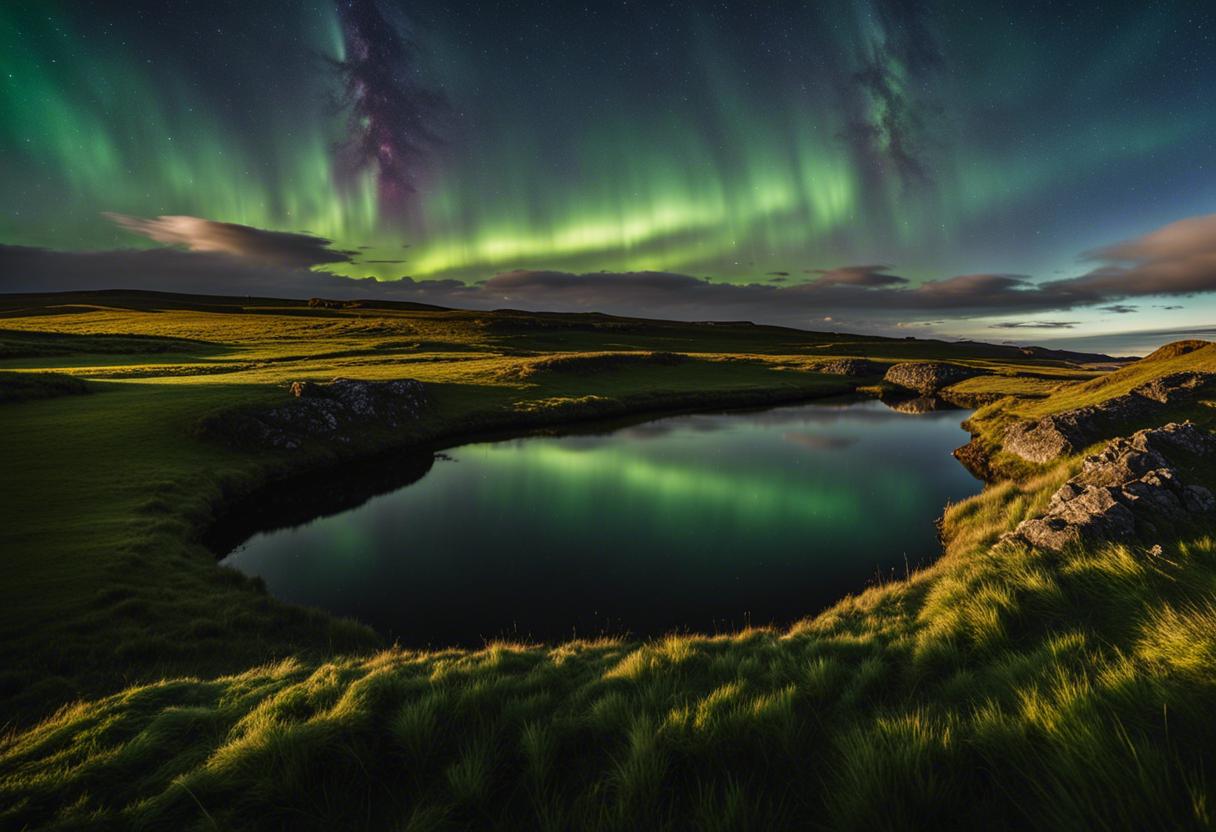An unusual occurrence of the Northern Lights illuminated the sky on Friday night, with numerous sightings reported across the country, suggests Met Éireann. Those who didn’t manage to witness the spectacle may have another chance tonight.
The duration of clear skies will be shorter on Saturday night compared to the previous evening, however, there remains an opportunity for much of the country to view the occurrence, which is usually exclusive to more northern regions such as Greenland or Northern Scandinavia.
Despite the likelihood of more cloud cover, as well as a decrease in the Northern Lights or aurora’s visibility compared to Friday night, the Dublin Institute for Advanced Studies indicates it is still possible to see them.
“We don’t offer forecasts for the aurora at Met Eireann, we rely on others for that,” commented forecaster Andrew Doran-Sherlock. “But, although the probability is lower than last night, there’s still a possibility. While there was an extended clear spell last night, tonight is predicted to be more cloudy. However, it’s still feasible.”
Lower chances for the aurora tonight have been projected, posing two factors which could diminish the possibilities, he explained.
“There’ll be increased cloud cover all over, and it’s more likely that the western parts of the country will have more cloud, but there will be intermittent clear spells. This leads to brief viewing opportunities.”
The Northern Lights, also identified as aurora borealis, were seen in Dublin, Connemara, Kerry, and Leitrim on Friday, along with Donegal, Kildare, Wicklow, and Carlow.
Across Europe, observations were made in the UK and Germany, and they were reported as far as Alabama and southern California in the USA.
Occurrences of the aurora come to life when charged particles interact with gasses in Earth’s atmosphere near the magnetic poles.
These events are most common within the aurora oval in the northern hemisphere, a band covering latitudes between 60 and 75 degrees.
When the activity strengthens, it expands to cover a larger area, explaining why on occasion the aurora can be sighted as far as Ireland.
According to the US National Oceanic and Atmospheric Administration (NOAA), an “extreme” geomagnetic storm amplified the visibility of the Northern Lights on Friday.
NOAA also highlighted that Earth was hit by a G5 geomagnetic storm, categorised as ‘extreme’ and the highest level of geomagnetic storm, on Thursday which could have influenced communication systems, GPS and power grids.
The storm originated from an expansive and multifaceted cluster of sunspots which is 17 times larger than the Earth’s diameter. The last time Earth was hit by a storm of this magnitude, garnering a G5 rating, was back in October 2003 which resulted in power failures in Sweden. The impressive display of the Northern Lights visible across Ireland spurred a flurry of activity on social media platforms, with numerous stunning photographs being shared. This text contains additional information sourced from PA.

